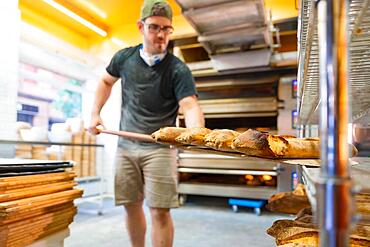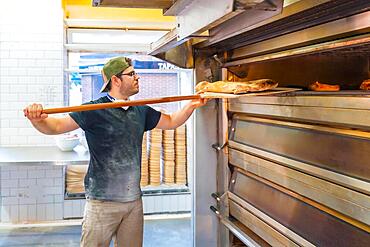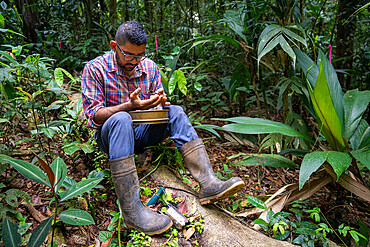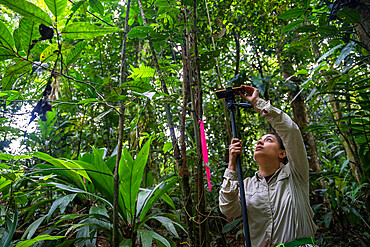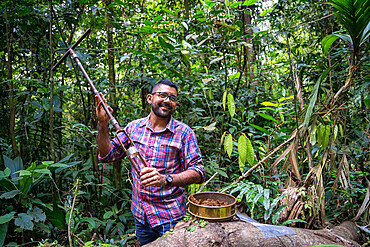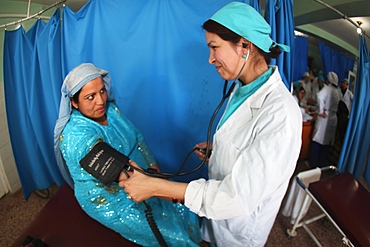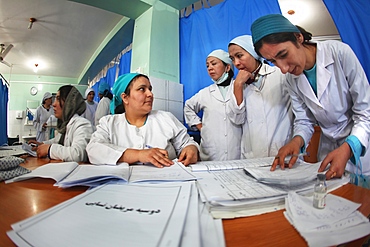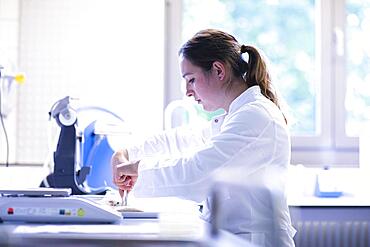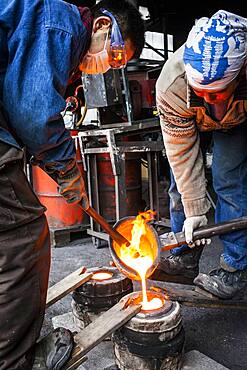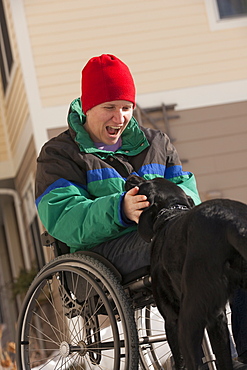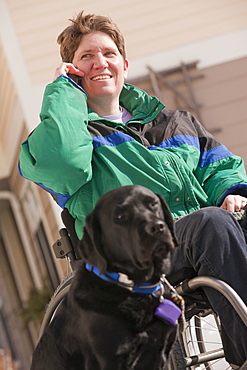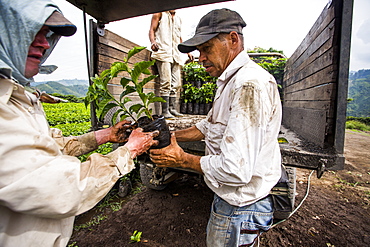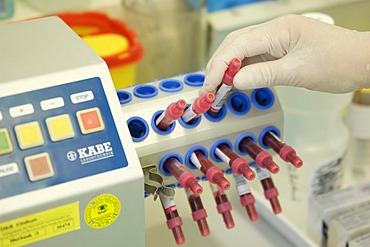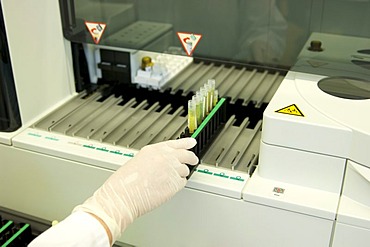Recent searches
Loading...
832-403807 - Female scientist with hijab microscope laboratory
832-402882 - Baker of bakery in the artisan workshop workshop placing the loaves of the oven on the shelves
832-402881 - Baker of bakery in the artisan workshop workshop placing the loaves of the oven on the shelves
832-402880 - Baker of bakery in the workshop artisan workshop baking loaves in the oven, checking the baking
832-402879 - Baker of bakery in the workshop artisan workshop baking loaves in the oven
860-291417 - Research assistant working on nitrogen exchanges between bacteria and the roots of legumes in the tropical forest of the "La Selva" research station in Puerto Viejo de Sarapiqui, Costa Rica
860-291414 - 29-year-old assistant researcher working on nitrogen exchange between bacteria and the roots of legumes in the rainforest at the "La Selva" research station in Puerto Viejo de Sarapiqui, Costa Rica
860-291412 - Research assistant working on nitrogen exchanges between bacteria and the roots of legumes in the tropical forest of the "La Selva" research station in Puerto Viejo de Sarapiqui, Costa Rica
832-400390 - Happy black woman entrepreneur standing in plant store selling fresh flowers to client. Young blond girl buy a fresh bouquet from florist. Smiling african woman botanist, selling flowers
832-400357 - Young black woman wearing beige apron on flower shop background with copy space. Portrait of successful african american woman looking at camera
832-400354 - Young black woman wearing beige apron on flower shop background with copy space. Portrait of successful african american woman looking at tablet computer
832-400320 - Tender shop assistant enjoying her job while serving bouquet for sale. Young florist in apron creating beautiful simple daisy bouquet in craft paper. Portrait of smiling girl with dark curly hair looking gladly at chamomile bouquet
1178-41562 - Makeup artist using makeup brush on woman
832-394372 - Young laboratory assistant with sample and laboratory glasses working in a laboratory with laboratory equipment, Freiburg, Baden-Wuerttemberg, Germany, Europe
832-394370 - Young laboratory assistant with sample and tweezers working in a laboratory with laboratory equipment, Freiburg, Baden-Wuerttemberg, Germany, Europe
832-394369 - Laboratory examination with laboratory assistant in an examination laboratory for food control, Freiburg, Baden-Wuerttemberg, Germany, Europe
832-394387 - Young laboratory assistant portrait working in a laboratory with laboratory equipment, Freiburg, Baden-Wuerttemberg, Germany, Europe
832-394371 - Young laboratory assistant with sample and laboratory glasses working in a laboratory with laboratory equipment, Freiburg, Baden-Wuerttemberg, Germany, Europe
832-394364 - Young laboratory assistant with microscope and sample working in a laboratory with light microscope, Freiburg, Baden-Wuerttemberg, Germany, Europe
832-394392 - Fish preparation for laboratory evaluation in a food control laboratory with laboratory assistant, Freiburg, Baden-Wuerttemberg, Germany, Europe
832-394373 - Young laboratory assistant with sample working in a laboratory with laboratory equipment, Freiburg, Baden-Wuerttemberg, Germany, Europe
832-394393 - Fish for laboratory evaluation in a laboratory for the control of food with laboratory assistant, Freiburg, Baden-Wuerttemberg, Germany, Europe
832-394374 - Young laboratory assistant with sample working in a laboratory with laboratory equipment, Freiburg, Baden-Wuerttemberg, Germany, Europe
832-394396 - Laboratory assistant prepares sample in food control laboratory with Spartel, Freiburg, Baden-Wuerttemberg, Germany, Europe
832-394367 - Young laboratory assistant with food sample works in a laboratory with laboratory equipment, Freiburg, Baden-Wuerttemberg, Germany, Europe
1113-106837 - Detail of a handshake deal for the sale of dromedaries in the Al Ain Camel Market, Al Ain, Abu Dhabi, United Arab Emirates, Middle East
1350-1127 - Takahiro Koizumi at left and his assistant Kohei ishimori at right are showing their finish work, iron teapots or tetsubin, nanbu tekki,Workshop of Koizumi family,craftsmen since 1659, Morioka, Iwate Prefecture, Japan
1350-1119 - Takahiro Koizumi and his assistant Kohei ishimori are pouring molten iron into the mold, to make a iron teapot or tetsubin, nanbu tekki,Workshop of Koizumi family,craftsmen since 1659, Morioka, Iwate Prefecture, Japan
1350-1099 - Takahiro Koizumi at right and his assistant kohei ishimori at left are making mud to build a molds to make a iron teapot or tetsubin, nanbu tekki,Workshop of Koizumi family,craftsmen since 1659, Morioka, Iwate Prefecture, Japan
1350-1120 - Takahiro Koizumi and his assistant Kohei ishimori are waiting that solidify the molten iron inside the molds, to make a iron teapot or tetsubin, nanbu tekki,Workshop of Koizumi family,craftsmen since 1659, Morioka, Iwate Prefecture, Japan
1350-1757 - Mrs Mohini Giri, Chairperson in India of The NGO Guild for Service, and her assistant Lopamudra, Delhi, India
1350-1126 - Takahiro Koizumi at left and his assistant at right are showing their finish work, iron teapots or tetsubin, nanbu tekki,Workshop of Koizumi family,craftsmen since 1659, Morioka, Iwate Prefecture, Japan
1116-49610 - Woman with multiple sclerosis playing with a service dog
1116-49609 - Woman with multiple sclerosis talking on a mobile phone with a service dog
1116-50494 - Boy with Spastic Quadriplegic Cerebral Palsy and teacher in the school hallway
1116-50479 - Teen with Spastic Dystonic Cerebral Palsy and assistant at school
1116-50490 - Boy with Spastic Quadriplegic Cerebral Palsy using using his helmet and strap
1116-50482 - Teen with Spastic Dystonic Cerebral Palsy and assistant at school
1116-50481 - Teen with Spastic Dystonic Cerebral Palsy and assistant at school
1116-50495 - Boy with Spastic Quadriplegic Cerebral Palsy and teacher in the school hallway
1116-50485 - Teen with Holoprosencephaly and assistant at school
1116-50486 - Teen with Spastic Dystonic Cerebral Palsy and assistant at school
1116-50478 - Teen with Spastic Dystonic Cerebral Palsy and assistant at school
1116-50497 - Boy with Spastic Quadriplegic Cerebral Palsy and teacher at school
1116-50493 - Boy with Spastic Quadriplegic Cerebral Palsy using elevator at school
1116-50491 - Boy with Spastic Quadriplegic Cerebral Palsy using using his helmet and strap
1116-49772 - Service dog helping a woman with visual impairment down stairs
1116-49809 - Woman with hand brace directing Poodle service dog to open refrigerator
1116-49769 - Student with visual impairment and her service dog using Emergency station at school
1116-49768 - Woman with visual impairment walking with her service dog
1116-49776 - Woman with visual impairment in kitchen with her service dog
1116-49777 - Service dog helping a woman with visual impairment at a curb
1116-49770 - Student with visual impairment and her service dog crossing the street
1116-42067 - Mid-Aged Man Helping Daughter Tie Climbing Rope At Base Of Cliff, Near Rexford, Montana, Usa
857-92851 - Two men load young coffee plants into a truck before transporting them to a field where they will be planted on a farm in Manizales, Colombia.
857-92850 - Two men load young coffee plants into a truck before transporting them to a field where they will be planted on a farm in Manizales, Colombia.
832-324463 - Hand in a sterile glove placing a tube of blood in a mixer in a laboratory
832-324456 - Hand in a sterile glove placing trays in a large piece of clinical equipment in a laboratory
832-314155 - DEU, Germany, Duesseldorf: Police NRW, Federal Police, technical crime investigation service. DNA analysis laboratory. |
1161-3835 - Shop assistant at fresh fish counter in supermarket in Chongqing, China
832-52492 - "Im Weinparadies", a Hundertwasser house, Hirn vineyard estate, a project initiated by Friedensreich Hundertwasser and completed by his assistant architect Heinz M. Springmann after his death, a vineyard estate surrounded by vineyards, Untereisenheim, dis
832-52489 - "Im Weinparadies", a Hundertwasser house, Hirn vineyard estate, a project initiated by Friedensreich Hundertwasser and completed by his assistant architect Heinz M. Springmann after his death, a vineyard estate surrounded by vineyards, Untereisenheim, dis
832-52487 - "Im Weinparadies", a Hundertwasser house, Hirn vineyard estate, a project initiated by Friedensreich Hundertwasser and completed by his assistant architect Heinz M. Springmann after his death, a vineyard estate surrounded by vineyards, Untereisenheim, dis
1113-87430 - dental treatment, dentist, dental assistants, face masks, equipment, MR
1113-87428 - dental treatment, dentist, dental assistants, face masks, equipment, MR
1113-87432 - dental treatment, dentist, dental assistants, face masks, equipment, MR
1113-41755 - Nutcakes, Sales assistant, Truffle Fair, Alba, Langhe, Piedmont, Italy
1113-41751 - Pasticceria Barbero, Sales assistant, Chocolate Shop, Bra, Piedmont, Italy
1113-38149 - Smiling shop assistant at Les Caneles Baillardran bakery and cake shop, Bordeaux, Gironde, Aquitane, France, Europe
1113-32514 - Shop assistant mit danish pastries in front of La Glace bakery shop, famous old bakery, Copenhagen, Denmark
1113-7065 - Europe, Germany, Bavaria, Munich, Bavarian State Library, library assistant with a book mobile in a book stack
857-62780 - A local hunter, Abdul Rahim, discusses wild animals and their habitat with a wildlife biologist, Dr. George Schaller and his assistant, who are conducting a wildlife survey, in the Band-e Baba range, Herat Province, Afghanistan
857-66658 - Seven workers are disassembling computers at TES-AMM Shanghai, which was founded on September 21, 2005, currently has 67 employees of which 26 are workers. With an annual production capacity of 10,000 tons, it has only treated 2,000 tons of e-waste from its founding more than a year ago. 'The biggest problem is that there isn't an e-waste recycling channel in China. The biggest chunks of raw materials we get are from government bodies, which are upgrading their equipments, and electronic appliances franchises that are washing out their outdated inventories. We don't have any imported e-waste because that's banned by the government. It takes a worker no more than ten minutes to disassemble a computer, and each worker can deal with between 60 to 70 computers a day,' says Janice Wu, who's the Environment & Quality Management Dept. Manager and Plant Manager Assistant.
857-37193 - Research assistants and technicians from the University of Ghana collect dust samples from the living rooms and bedrooms of children in Accra, Ghana. The samples will be analyzed for the presence of dust mites, fungus', and animal allergens to help researchers better understand why children in wealthier homes have higher rates of allergies and asthma than poorer children. The leading theory is that higher rates of helminth (parasite) infections among poorer children are affecting the immune system in a way that offers protection from allergies and asthma. The study aims to find out what the worms are doing, isolate the beneficial effect and replicate it.
857-37194 - Research assistants and technicians from the University of Ghana collect dust samples from the living rooms and bedrooms of children in Accra, Ghana. The samples will be analyzed for the presence of dust mites, fungus', and animal allergens to help researchers better understand why children in wealthier homes have higher rates of allergies and asthma than poorer children. The leading theory is that higher rates of helminth (parasite) infections among poorer children are affecting the immune system in a way that offers protection from allergies and asthma. The study aims to find out what the worms are doing, isolate the beneficial effect and replicate it.
857-37195 - Research assistants and technicians from the University of Ghana perform basic skin prick tests on school children in Accra, Ghana to test for sensitivities to dog, cat, dust mites, grass pollen, peanuts, and cockroach allergens. The results have shown that children in wealthier homes have higher rates of allergies and asthma than poorer children. The leading theory is that higher rates of helminth (parasite) infections among poorer children are affecting the immune system in a way that offers protection from allergies and asthma. The study aims to find out what the worms are doing, isolate the beneficial effect and replicate it.
857-37208 - Research assistants and technicians from the University of Ghana collect dust samples from the living rooms and bedrooms of children in Accra, Ghana. The samples will be analyzed for the presence of dust mites, fungus', and animal allergens to help researchers better understand why children in wealthier homes have higher rates of allergies and asthma than poorer children. The leading theory is that higher rates of helminth (parasite) infections among poorer children are affecting the immune system in a way that offers protection from allergies and asthma. The study aims to find out what the worms are doing, isolate the beneficial effect and replicate it.
857-37210 - Research assistants and technicians from the University of Ghana perform basic skin prick tests on school children in Accra, Ghana to test for sensitivities to dog, cat, dust mites, grass pollen, peanuts, and cockroach allergens. The results have shown that children in wealthier homes have higher rates of allergies and asthma than poorer children. The leading theory is that higher rates of helminth (parasite) infections among poorer children are affecting the immune system in a way that offers protection from allergies and asthma. The study aims to find out what the worms are doing, isolate the beneficial effect and replicate it.
1196-177 - Some religious people reach Brahmayani temple measuring their body length. To do so, a person prostrates on the ground and extends his clasped hands above his head. An assistant puts a few grains of rice at the end of the clasped hands as a marking point. Then, the man steps to this marking point and then prostrates again. Bhaktapur, Nepal
1196-73 - Some religious people reach Brahmayani temple measuring their body length. To do so, a person prostrates on the ground and extends his clasped hands above his head. An assistant puts a few grains of rice at the end of the clasped hands as a marking point. Then, the man steps to this marking point and then prostrates again. Bhaktapur, Nepal
1196-245 - Some religious people reach Brahmayani temple measuring their body length. To do so, a person prostrates on the ground and extends his clasped hands above his head. An assistant puts a few grains of rice at the end of the clasped hands as a marking point. Then, the man steps to this marking point and then prostrates again. Bhaktapur, Nepal
1196-168 - Some religious people reach Brahmayani temple measuring their body length. To do so, a person prostrates on the ground and extends his clasped hands above his head. An assistant puts a few grains of rice at the end of the clasped hands as a marking point. Then, the man steps to this marking point and then prostrates again. Bhaktapur, Nepal
975-33 - Antony, a local administrative assistant from Gulu, working for a British aid agency AFCIC- Action for Children in Conflict. Gulu Town, Uganda, East Africa
970-829 - Cayman Islands Technical Diver entering water with assistance, Divetech, Grand Cayman Island, Cayman Islands, Caribbean
834-6629 - Shop assistant in material and silk shop, The Old Market, Siem Reap, Cambodia, Indochina, Southeast Asia, Asia
450-2241 - Imam and assistant praying, Central Mosque, Margilan, Uzbekistan, Central Asia, Asia
641-3222 - Portrait of a shop assistant inantique area of Jewtown, Fort Cochin, Kerala state, India, Asia
450-3902 - Imam and assistant praying, Central Mosque, Margilan, Uzbekistan, Central Asia, Asia
641-3223 - Shop assistant in the antique area of Jewtown, Fort Cochin, Kerala, India, Asia
You reached the end of search results

